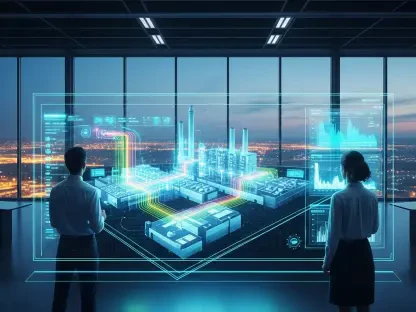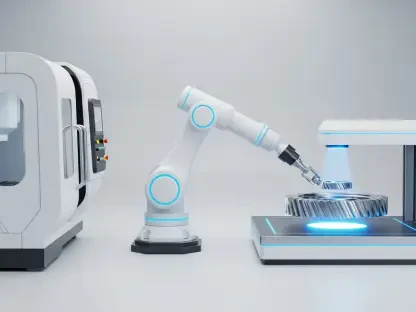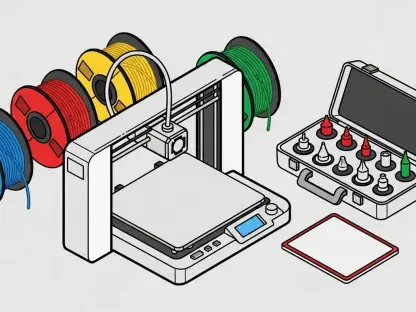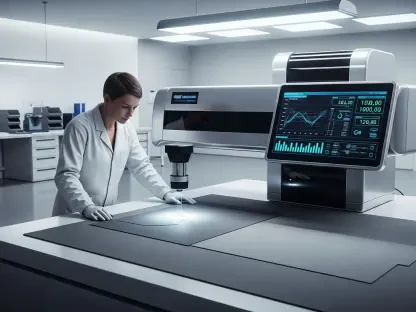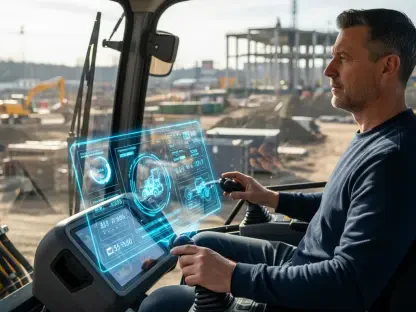The United States is currently navigating a critical water crisis characterized by significant water scarcity and aging water infrastructure, presenting an immediate challenge across various states, particularly exacerbated in the American West. Schneider Electric and Bluefield Research report that over a third of U.S. states are already under varying degrees of water stress, with New Mexico facing “extremely high” water stress, and others like California, Arizona, and Colorado experiencing high levels of water stress. The urgent demand for innovative water management solutions is more pressing than ever, underscoring the need for innovative approaches to address this growing concern.
Addressing this crisis is financially intensive, with the Environmental Protection Agency (EPA) estimating that modernizing the nation’s water infrastructure will require more than $630 billion over the next two decades. Yet, finding ways to address this immense financial burden while maintaining water quality, affordability, and sustainability is a complex challenge. Automation and digital technologies present promising solutions, potentially reducing water use by up to 40% while simultaneously optimizing resource utilization. This makes the exploration of these technologies critical for ensuring a sustainable water future in the U.S.
Industrial Water Consumption: A Major Challenge
Industrial sectors in the U.S. are among the most significant consumers of freshwater, with the energy sector alone withdrawing almost 52 billion gallons of water daily—equivalent to filling approximately 78,788 Olympic-sized swimming pools. This level of consumption underscores the scale of water usage within industrial activities, revealing a major challenge that needs addressing for sustainable water management. Other prominent industrial consumers include sectors such as Chemical & Pharmaceutical, Pulp & Paper, Mining, and Food & Beverage, all of which are integral to the country’s economic activities.
In the Chemical & Pharmaceutical industry, water is vital for chemical reactions, product formulation, and cooling processes. This sector alone utilizes 3.9 billion gallons of water per day, showcasing its substantial demand for this precious resource. Similarly, the Pulp & Paper sector uses 3.5 billion gallons of water per day for processes such as pulping raw materials and transporting fiber, playing a crucial role in the packaging and printing industries. Mining, relying on water for mineral extraction, dust control, and ore processing, consumes 1.6 billion gallons per day, highlighting its importance for metal and mineral production. The Food & Beverage sector, essential for washing raw ingredients, cooking, cooling, and sanitation, uses 1.5 billion gallons per day to maintain food safety and product quality, reinforcing the intertwined relationship between water and industrial growth.
Given these high levels of water consumption, the figures are expected to rise significantly by 2050, particularly in burgeoning sectors such as pharmaceuticals, food processing, semiconductors, and data centers. These industries are pivotal to daily life and economic progress; thus, the objective should not be to curtail their water use but to manage it efficiently and sustainably. Implementing advanced technology and optimizing water management practices in these critical sectors will be instrumental in conserving water resources for future generations.
Transforming Water Management with Automation
Software-defined automation is beginning to revolutionize water and wastewater utilities by separating hardware from software, a transformation that enables enhanced operational efficiency, reduced energy consumption, and accelerated digital transformation within the industry. These digital platforms foster improved communication and data sharing within operations, which in turn provide greater insight into energy use, machine functionality, and process efficiency, highlighting numerous optimization opportunities. This separation allows facilities to adapt more readily to evolving demands and challenges in water management, propelling them towards greater sustainability.
Beyond real-time optimization, automation technologies advance predictive maintenance through comprehensive data analytics, permitting operators to monitor equipment health and predict failures beforehand. This proactive methodology minimizes unscheduled downtime, reduces maintenance costs, and extends the lifespan of crucial infrastructure. By predicting when and where issues might occur, water utilities can better plan interventions, ultimately improving service reliability and reducing operational expenses. Moreover, the integration of real-time monitoring systems ensures that facilities remain consistently compliant with regulatory standards, fostering trust and reliability within communities.
Automation also supports the implementation of circular water practices, facilitating the reuse and recycling of water within industrial processes. Through closed-loop systems, companies can significantly reduce their dependency on freshwater sources, decrease wastewater discharge, and mitigate environmental impacts. This approach aligns operational objectives with sustainability goals, helping industries comply with increasingly stringent environmental regulations. Adopting these advanced technologies offers a pathway to transforming traditional water management practices, ensuring industries handle their water resources in a more responsible and sustainable manner.
The Circular Water Economy: A Sustainable Future
To combat the growing freshwater scarcity, a shift towards a circular water economy is essential. Currently, only 11% of wastewater is reused, with the remainder discharged into the environment—a statistic that underscores the vast potential for improvement in water management practices. By adopting circular practices, industries can retrieve valuable resources such as energy, nutrients, and metals from wastewater, transforming it from a liability into an asset. This reutilization not only preserves water resources but also provides economic benefits by reducing the costs associated with fresh water procurement and wastewater treatment.
Examples of successful circular water management initiatives can be found worldwide. Brazil’s Aquapolo project, for instance, demonstrates how industrial innovation can conserve freshwater resources effectively. In this project, highly treated industrial wastewater is reused for non-potable purposes, significantly reducing the reliance on freshwater sources. Similarly, in New Jersey, the Willingboro Municipal Utilities Authority (WMUA) project implemented 13,000 new smart water meters, generating $7 million in savings over 20 years. These smart meters enable more precise measurement of water use, reducing waste and improving efficiency, reflecting the tangible benefits of embracing circular water practices.
The transition to a circular water economy requires a collaborative effort among industries, municipalities, and technology providers. Implementing advanced treatment technologies and infrastructure investments can facilitate the shift towards sustainable water use. Additionally, policy frameworks and incentives that promote water reuse and recycling practices can foster innovation and support the widespread adoption of circular water solutions. As freshwater scarcity intensifies, the adoption of circular practices becomes not just an option but a necessity for long-term water sustainability.
Balancing Efficiency, Sustainability, and Resilience
The water sector’s impact extends beyond resource consumption, accounting for approximately 4% of global electricity usage and contributing to greenhouse gas emissions. This percentage is anticipated to increase significantly by 2040, with energy consumption in the water sector potentially rising to 20% of electricity demand for water-related activities. Amidst climate change exacerbating water scarcity, industries must balance efficiency, sustainability, and resilience to navigate these challenges effectively. Adopting automation technologies offers a strategic approach to achieving this balance, addressing both energy efficiency and operational sustainability.
Automation is foundational in achieving this balance by reducing energy consumption through optimized processes. Automation systems can enhance pump performance, chemical dosing, and energy-intensive processes, thereby significantly lowering energy usage and associated emissions. This optimization not only reduces costs but also aligns industrial activities with broader environmental goals, contributing to global efforts against climate change. Additionally, integrating renewable energy sources within automated systems can further enhance sustainability by reducing dependence on traditional energy sources.
Moreover, automation enhances cyber resilience as water infrastructure becomes more interconnected. Securing these systems against digital threats is crucial, and automation technologies must be both flexible and secure to withstand potential cyberattacks. Implementing robust cybersecurity measures within automated water management systems ensures the integrity and reliability of water services, protecting critical infrastructure from disruptions. Furthermore, open, vendor-agnostic automation solutions allow industries to upgrade software independent of hardware, prolonging equipment lifespan and reducing capital expenditures, fostering a resilient water management infrastructure capable of adapting to future challenges.
The Path Forward: Embracing Digital Transformation
Solving the water crisis demands a paradigm shift in how industries approach water management. Incremental improvements are insufficient; industries must adopt a holistic, digital-first strategy integrating automation, data analytics, and circular economy principles. Universal automation, which decouples software from proprietary hardware, paves the way for future water management by creating flexible, adaptable infrastructure. This transformation enables continuous evolution in water management practices, ensuring industries can meet emerging challenges with agility and innovation. Embracing digital transformation is essential for securing a sustainable and efficient water future.
Digital twins, or virtual replicas of physical systems, represent another transformative technology that provides a single source of truth across the lifecycle of water infrastructure, from design to operation. These digital replicas allow operators to simulate different scenarios and make informed decisions that enhance efficiency, reduce energy use, and lower operational costs. The ability to visualize and optimize the entire system facilitates better resource management, ensuring that water utilities can respond proactively to dynamic conditions.
To effectively implement these digital solutions, industries must foster collaboration and knowledge sharing among stakeholders. Partnerships between technology providers, regulatory bodies, and industry leaders can drive the development and adoption of innovative solutions. Training and capacity-building initiatives are also critical to equip personnel with the skills needed to operate and maintain advanced automated systems. By prioritizing education and collaboration, the water sector can harness the full potential of digital transformation to address pressing water challenges.
Building a Resilient Water Future
The United States is facing a critical water crisis marked by significant scarcity and aging infrastructure, posing an urgent challenge nationwide, especially in the American West. Reports from Schneider Electric and Bluefield Research highlight that over a third of U.S. states are grappling with varying degrees of water stress. New Mexico is under “extremely high” water stress, while states like California, Arizona, and Colorado experience high levels. The pressing need for innovative water management solutions has never been greater.
Financially, addressing this crisis is daunting. The Environmental Protection Agency (EPA) estimates it will require over $630 billion in the next two decades to modernize the nation’s water systems. This immense financial burden must be managed while ensuring water quality, affordability, and sustainability—no easy task. However, automation and digital technologies offer promising solutions, potentially reducing water use by up to 40% and optimizing resource utilization. Exploring these technologies is vital for securing a sustainable water future in the U.S.


